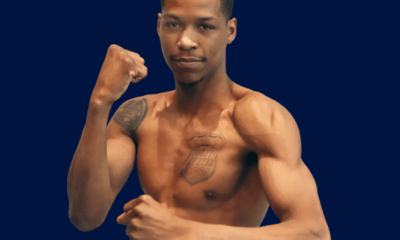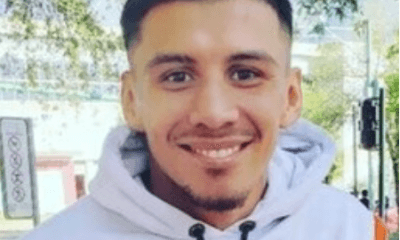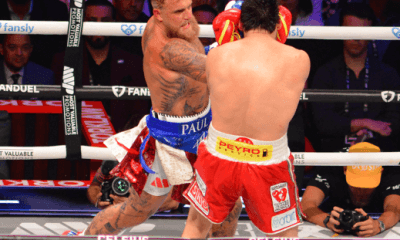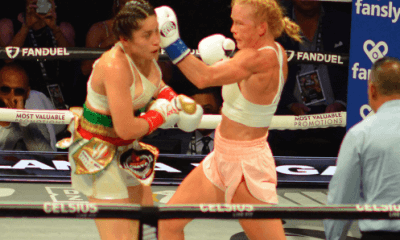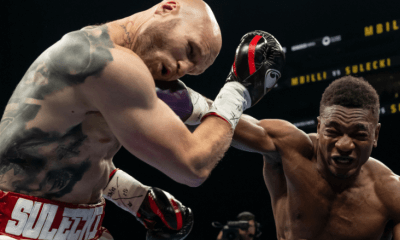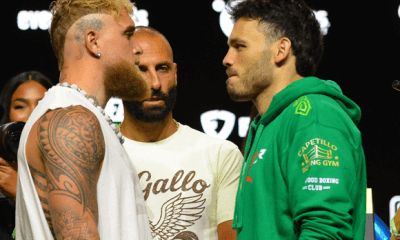Featured Articles
The Hauser Report: Oscar Valdez, Phentermine, and the Larger Issue
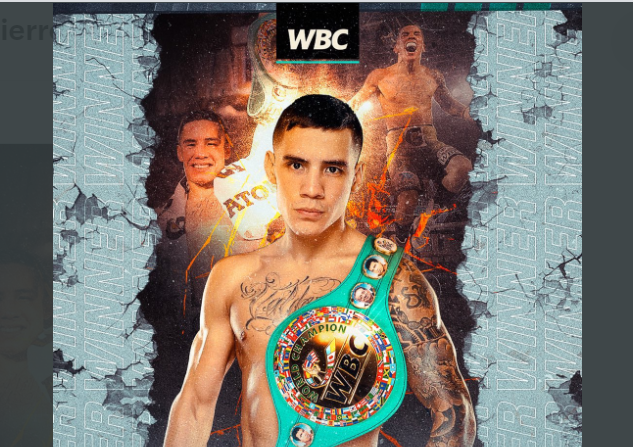
On September 10, Oscar Valdez successfully defended his WBC super-featherweight title with a twelve-round decision over Robson Conceicao in a bout contested under the auspices of the Pascua Yaqui Tribe in Tucson, Arizona.
That’s the short version of what happened. The long version is more complicated.
After their fight was signed, Valdez and Conceicao enrolled in the Voluntary Anti-Doping Association (VADA) drug-testing program. Top Rank, which promotes both fighters, forwarded their paperwork to VADA and contracted to pay for the VADA testing. This was in addition to the fighters’ mandatory participation in the World Boxing Council Clean Boxing Program (CBP).
In late-August, a urine sample taken by VADA from Valdez tested positive for phentermine – a prescription medication used as a stimulant and appetite suppressant. The use of phentermine is classified by VADA as prohibited at all times.
VADA does not adjudicate performance enhancing drug matters. It tests fighters and reports its findings to contractually mandated parties. In this instance, after receiving the test result, VADA notified Top Rank, the World Boxing Council, and the Pascua Yaqui Tribe commission of the adverse finding.
Athletes rarely say, “I was using a PED and you caught me.” Valdez didn’t either. “What I can say,” he told Mark Kriegel of ESPN, “is that I’m a hundred-percent clean fighter. I don’t know how that got into my body.”
Patrick English (the attorney who represents Valdez) voiced the view that herbal tea, innocently ingested, was the most likely source of the phentermine and that various supplements Valdez took during training are being tested for any hint of contamination. He further noted that only a trace amount of phentermine was found in Valdez’s system and that all other blood and urine samples taken from Valdez by VADA tested negative.
Those arguments aren’t persuasive. Victor Conte (the nutrition and conditioning guru whose involvement with PEDs decades ago is a matter of record) states, “There is no connection between any herbal tea and phentermine in terms of molecular structure. No tea has ever been reported as being contaminated with phentermine. Ever in history. If you google ‘herbal tea phentermine,’ a company called their product by this name as a marketing ploy. But there’s not a shred of credible evidence I’m aware of to support the notion that phentermine is present in herbal tea. There has never been a positive test associated with any herbal tea. There is zero connection between herbal tea and phentermine.”
Conte also makes the point that, in today’s world of micro-dosing, drugs quickly leave a fighter’s system. All a negative test result means is that a fighter was clean on a particular day.
But Valdez had an ace in the hole. For purposes of drug testing, athletes are considered either “in competition” or “out of competition.” In competition begins at 11:59 PM on the night before an event.
When fighters enroll in VADA, they’re told that VADA has one prohibited list and that it doesn’t distinguish between in competition and out of competition drug use. Thus, VADA classifies phentermine as a prohibited substance at all times.
But – and this is a big but – while phentermine is banned in competition under the World Anti-Doping Agency code, its use out of competition is not prohibited by WADA.
Adjudication of Valdez’s case was left to the Pascua Yaqui Tribe Athletic Commission (which had jurisdiction over the fight) and the World Boxing Council (whose title belt was at stake). There was one hearing overseen jointly by both organizations. The tribal commission opted to follow the WADA standard and allowed the fight to proceed without punishment of any kind. The WBC’s position was a bit more complicated because the WBC Clean Boxing Program is, in theory, guided by VADA standards and the use of phentermine – even out of competition – is a violation of the CBP.
However, WBC president Mauricio Sulaiman found a way around this inconvenience, declaring, “This substance [phentermine] does not give you any competitive advantage. It is the equivalent of having three energy drinks.” Sulaiman also noted that only a trace amount of phentermine was found in Valdez’s system.
The WBC then ruled that it would officially sanction Valdez-Conceicao as a title fight. But at the same time, it placed Valdez on probation for twelve months. In addition, Valdez was ordered to take part in and pay for several unspecified educational programs, undergo an unspecified number of random drug tests, and make a minimum of six personal appearances as a WBC Ambassador to promote and educate others with regard to principles consistent with clean boxing.
The WBC ruling ruffled a lot of feathers. Victor Conte is among its foremost critics.
“I’ve given phentermine to athletes in the past,” Conte says. “I know what it does. It’s a powerful central nervous system stimulant and one of the most effective PEDs a boxer can use. It increases heart rate and enables the heart to pump more oxygen to muscle tissue which delays the onset of fatigue and helps increase speed, strength, and stamina. It also suppresses appetite and burns calories to help with weight loss. And its use can lead to serious heart problems. Athletes in other sports are suspended for using phentermine. A player in the NBA [Lindsey Hunter] was suspended after he tested positive for phentermine. Jockeys in horse racing are suspended if they use phentermine to cut weight.”
Why does WADA allow for the use of phentermine out of competition if it has the performance-enhancing and dangerous qualities that Conte says it does?
“Let’s get real about this,” Conte answers. “First, WADA’s protocols were put in place with an eye toward protecting sponsorship dollars. Too many adverse test results are bad for business. And second, WADA’s protocols aren’t designed for boxers. If a stimulant is on the banned list on fight night and you acknowledge that it enhances performance, why would it be legal in training camp? Does this mean that someone can use all the phentermine they want up until the day of a fight? That would be dangerous and allowing it to happen would be negligent.”
“When Oscar Valdez signed up for VADA testing,” Conte continues, “he agreed to follow VADA’s protocols, which include not using phentermine in or out of competition. The WBC didn’t want to lose its sanctioning fee. The tribal commission didn’t want to lose the money that would come in from Valdez-Conceicao and future fights. It’s as simple as that.”
In 2018, Billy Joe Saunders tested positive for the stimulant Oxilofrine, which (like phentermine) is allowed by WADA “out of competition” but is on VADA’s prohibited list at all times. Saunders claimed that the Oxilofrine came from a nasal spray. The Massachusetts State Athletic Commission denied him a license to box and his planned WBO title defense against Demetrius Andrade was cancelled.
“It is the classic case of rules in one place count for nothing in another,” Boxing News editor Matt Christie writes. “The problem lies with a complete lack of uniformity across the governing and sanctioning bodies. Even more problematic is that the sanctioning bodies appear to pick and choose what rules suit them on a particular day.”
Christie is right. There are too many variables. Is there PED testing for a given fight? Which tests? Which commission has jurisdiction over the fight. Who’s administering the tests? Is a sanctioning body involved? To cite one example of an absurd situation, human growth hormone and EPO are still not on the New York State Athletic Commission’s list of banned substances.
In so far as phentermine is concerned, California State Athletic Commission executive director Andy Foster says, “The California State Athletic Commission views the use of phentermine out of competition in the same way as the World Anti-Doping Agency. Phentermine is not a banned substance out of competition by WADA, so it is not banned by the CSAC either.”
Nevada State Athletic Commission executive director Bob Bennett says that Nevada also adheres to the WADA list.
Does this mean that Tyson Fury, Deontay Wilder, Canelo Alvarez and Caleb Plant can use all the phentermine they want prior to their upcoming fights in Las Vegas as long as it isn’t in their system on the day of the fight?
“Not exactly,” Bennett answers. “Phentermine is a prescription drug so, if a fighter uses phentermine, he must declare its use on a pre-fight form and answer questions as to where he got the prescription and why he’s taking it.”
I don’t know what Oscar Valdez did and didn’t do. I do know that most of the moneyed interests in boxing couldn’t care less about protecting the health and safety of fighters except to the extent that they’re protecting their own financial interests. Clean fighters have to stand up and take control on this issue. As part of their effort, they should demand one national standard.
As Andre Ward stated during ESPN’s coverage of Valdez-Conceicao, “We can’t keep moving the goal posts.”
Thomas Hauser’s email address is thomashauserwriter@gmail.com. His next book – Broken Dreams: Another Year Inside Boxing – will be published this autumn by the University of Arkansas Press. In 2004, the Boxing Writers Association of America honored Hauser with the Nat Fleischer Award for career excellence in boxing journalism. In 2019, he was selected for boxing’s highest honor – induction into the International Boxing Hall of Fame.
Check out more boxing news on video at the Boxing Channel
To comment on this story in the Fight Forum CLICK HERE
-

 Featured Articles3 weeks ago
Featured Articles3 weeks agoAvila Perspective, Chap. 330: Matchroom in New York plus the Latest on Canelo-Crawford
-
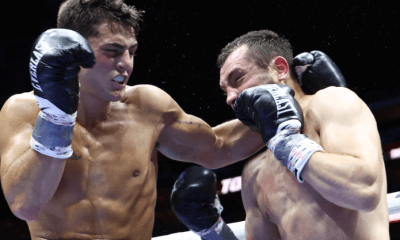
 Featured Articles2 weeks ago
Featured Articles2 weeks agoVito Mielnicki Jr Whitewashes Kamil Gardzielik Before the Home Folks in Newark
-
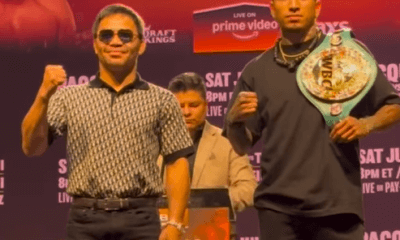
 Featured Articles4 weeks ago
Featured Articles4 weeks agoAvila Perspective, Chap 329: Pacquiao is Back, Fabio in England and More
-
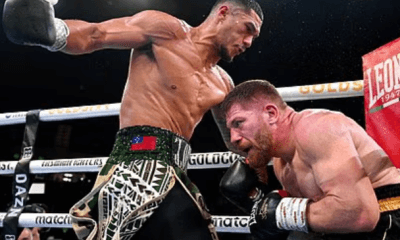
 Featured Articles3 weeks ago
Featured Articles3 weeks agoOpetaia and Nakatani Crush Overmatched Foes, Capping Off a Wild Boxing Weekend
-
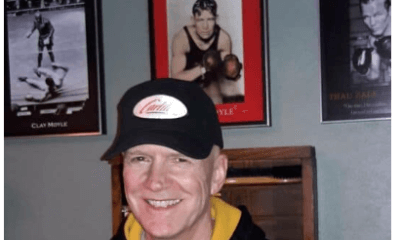
 Featured Articles2 weeks ago
Featured Articles2 weeks agoCatching Up with Clay Moyle Who Talks About His Massive Collection of Boxing Books
-

 Featured Articles4 weeks ago
Featured Articles4 weeks agoFabio Wardley Comes from Behind to KO Justis Huni
-
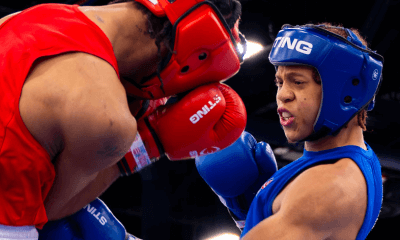
 Featured Articles1 week ago
Featured Articles1 week agoMore Medals for Hawaii’s Patricio Family at the USA Boxing Summer Festival
-
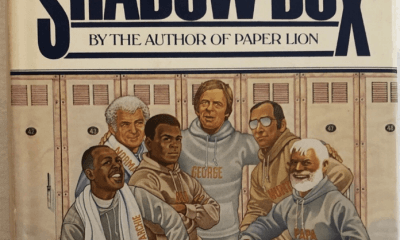
 Featured Articles4 weeks ago
Featured Articles4 weeks agoDelving into ‘Hoopla’ with Notes on Books by George Plimpton and Joyce Carol Oates

